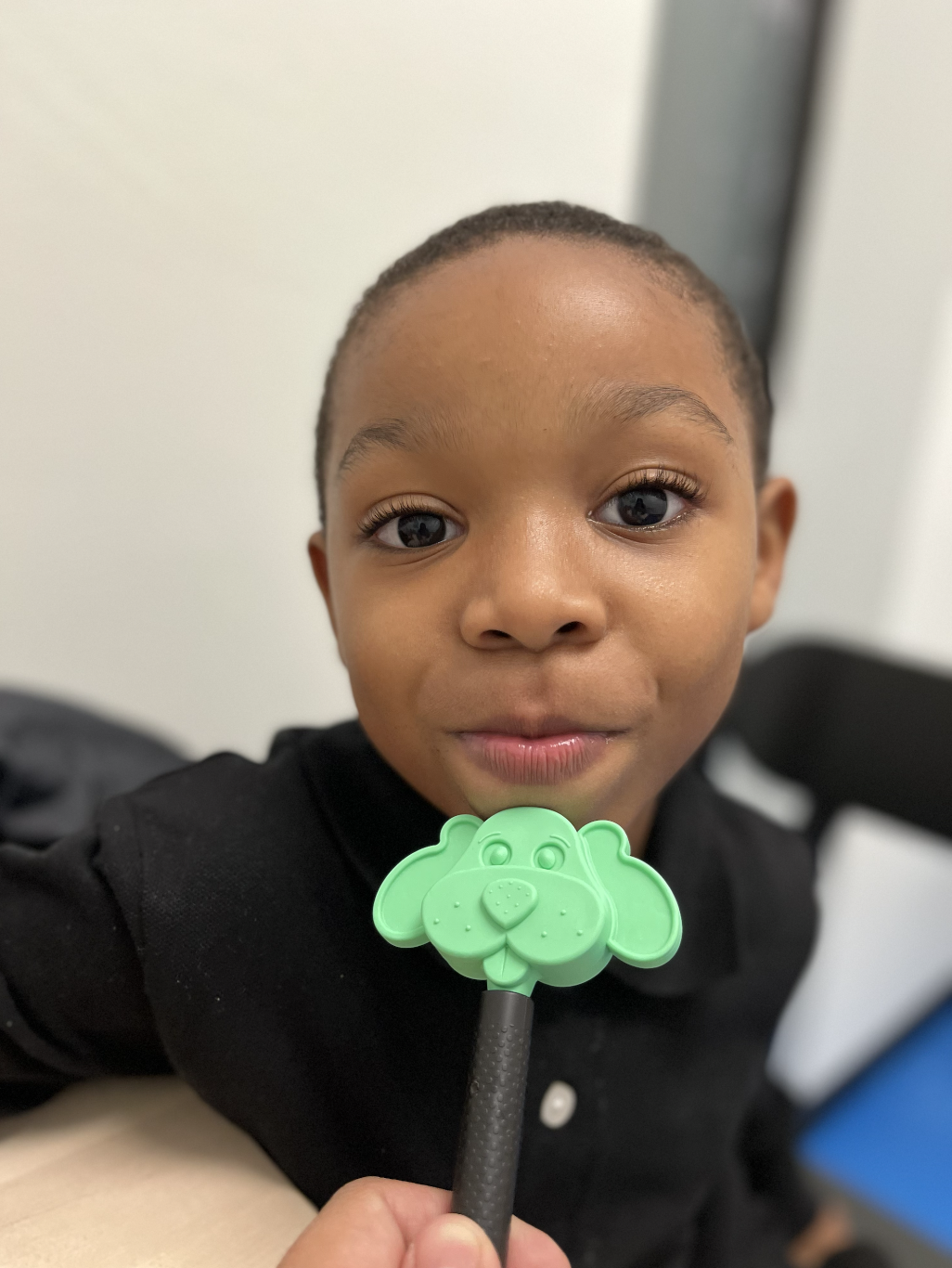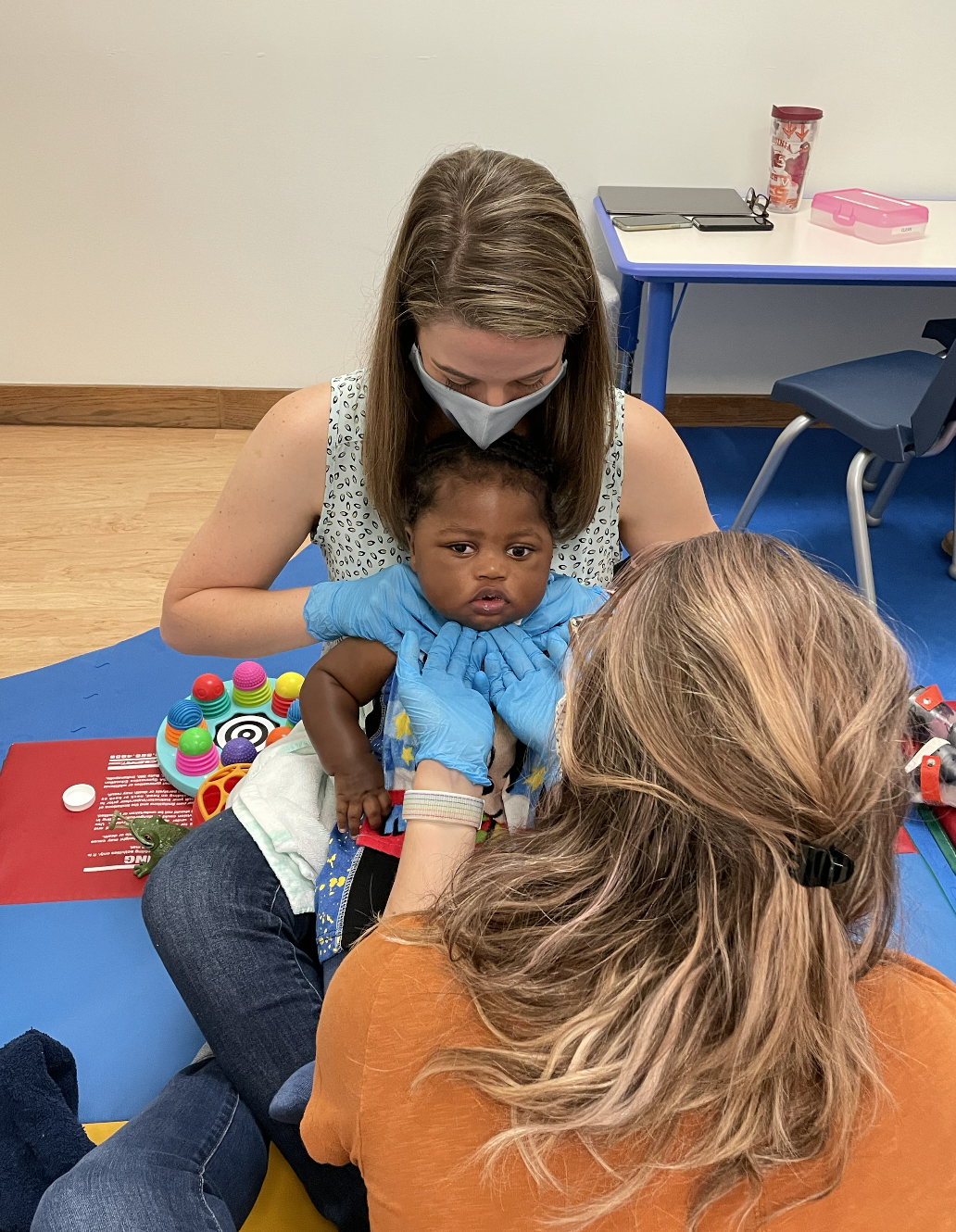Orofacial Myofunctional Therapy (OMT)
Orofacial Myofunctional Therapy (OMT) is used to establish (or re-establish) normal oral rest postures and muscle functions of the mouth. Myofunctional therapy occurs as a part of a collaborative team to improve the child’s quality of life. Treatment goals may include: eliminate any harmful sucking habit (thumb-sucking/pacifier/prolonged use of sippy cups), establish nasal breathing patterns, normalize tongue, lip, and teeth resting postures, and improve functional chewing and swallowing.
In many cases when children/adults fail to make progress with articulation or feeding goals or experience orthodontic relapse (think: teeth shifting back after braces), there is an underlying cause. Orofacial Myofunctional Disorders (OMDs) are frequently the cause and can affect directly and/or indirectly breastfeeding, facial growth & development, breathing, chewing, swallowing, speech, occlusion (teeth alignment), temporomandibular joint movement (TMJ), oral hygiene, stability of orthodontic treatment, facial esthetics, and more.


Here are some causes of Orofacial Myofunctional Disorders (OMDs):
- Restricted Nasal Airway- due to enlarged tonsils/adenoids, deviated septum, and/or allergies
- Improper Oral Habits (such as thumb sucking)
- Extended use of pacifier and/or long-term use of sippy cups
- Structural or physiological abnormalities (including tongue-tie)
- Neurological deficits and developmental delays
- Hereditary Predisposition
Should I be concerned? Red Flags:
- Open Mouth Rest Posture/Mouth Breathing
- Thumb/Finger Sucking
- Prolonged Pacifier Usage
- Forward Resting Tongue Posture (between or against teeth)
- Tongue Thrust
- Orthodontic Relapse (Teeth movement after the removal of braces)
- Speech problems (such as poor articulation due limited tongue movement)
- Messy Eater/Swallowing Problems
- Poor Dental Hygiene/teeth movement

